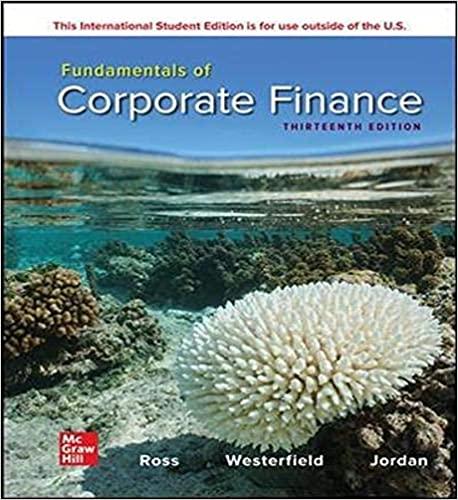Question
21. Which of the following could be considered as a disadvantage of using floating exchange rates? I. There is no certainty when it comes to
21. Which of the following could be considered as a disadvantage of using floating exchange rates?
I. There is no certainty when it comes to the future value of a particular currency.
II. There is no speculation in the foreign currency markets when exchange rates are floating.
III. There will always be a certain amount of risk due to changing exchange rates.
Select one:
A. I and II only
B. I and III only
C. II and III only
D. I, II, and III
22 The The International Monetary Fund (IMF)
Select one:
A. is a relief agency working directly for the United Nations.
B. is primarily responsible for determining U.S. monetary policy and short-term interest rates.
C. both of the above.
D. none of the above.
23 The foreign-exchange system adopted at the Bretton Woods Conference can be characterized as a
Select one:
A. traditional gold standard.
B. floating exchange standard.
C. fixed exchange standard.
D. non-interventionist standard.
24 Which of the following currencies were established by the Bretton Woods Accord as the international "key currency" to which the major world currencies were fixed in value?
Select one:
A. The U.S. dollar
B. The British pound
C. The German mark
D. The French franc
25 Which of the following multilateral institutions provideslong-term development loansto governments of developing nations?
Select one:
A. The BIS
B. The IMF
C. The World Bank
D. All of the above
26 The Bank for International Settlements (BIS):
I. Provides short-term bridge loans to nations facing an immediate financial crisis
II. Is a "think-tank" for central bankers in matters concerning international finance
III. Is considered to be authoritative concerning matters of international finance
Select one:
A. I and II only
B. I and III only
C. II and III only
D. I, II, and III
27 The International Monetary Fund (IMF) was established in an effort to
Select one:
A. combat the growing threat of Soviet communism.
B. protect European markets from international competitors.
C. return to an international gold standard.
D. stabilize currency values through fixed exchange rates.
28 Faced with a continuing drain of U.S. gold reserves, the U.S. chose to
Select one:
A. allow interest rates to rise in order to attract gold back into U.S. vaults.
B. lower the exchange ratio of dollars to gold from 1/35 ounce to 1/70 ounce.
C. eliminate the redemption of foreign-held U.S. dollars for gold.
D. end the military draft in an effort to boost U.S. productivity.
29Pegged exchange rates
Select one:
A. tie the value of one currency to another.
B. allow a currency to float in value against all other currencies.
C. are not being used today, since the world is on a different exchange rate system.
D. none of the above.
30 Which of the following can be considered as a disadvantage of using a pegged exchange rate?
Select one:
A. The pegged currency's value may not reflect underlying economic fundamentals
B. It may not be possible to maintain the pegged currency's value over time
C. Both of the above
D. None of the above
Step by Step Solution
There are 3 Steps involved in it
Step: 1

Get Instant Access to Expert-Tailored Solutions
See step-by-step solutions with expert insights and AI powered tools for academic success
Step: 2

Step: 3

Ace Your Homework with AI
Get the answers you need in no time with our AI-driven, step-by-step assistance
Get Started


